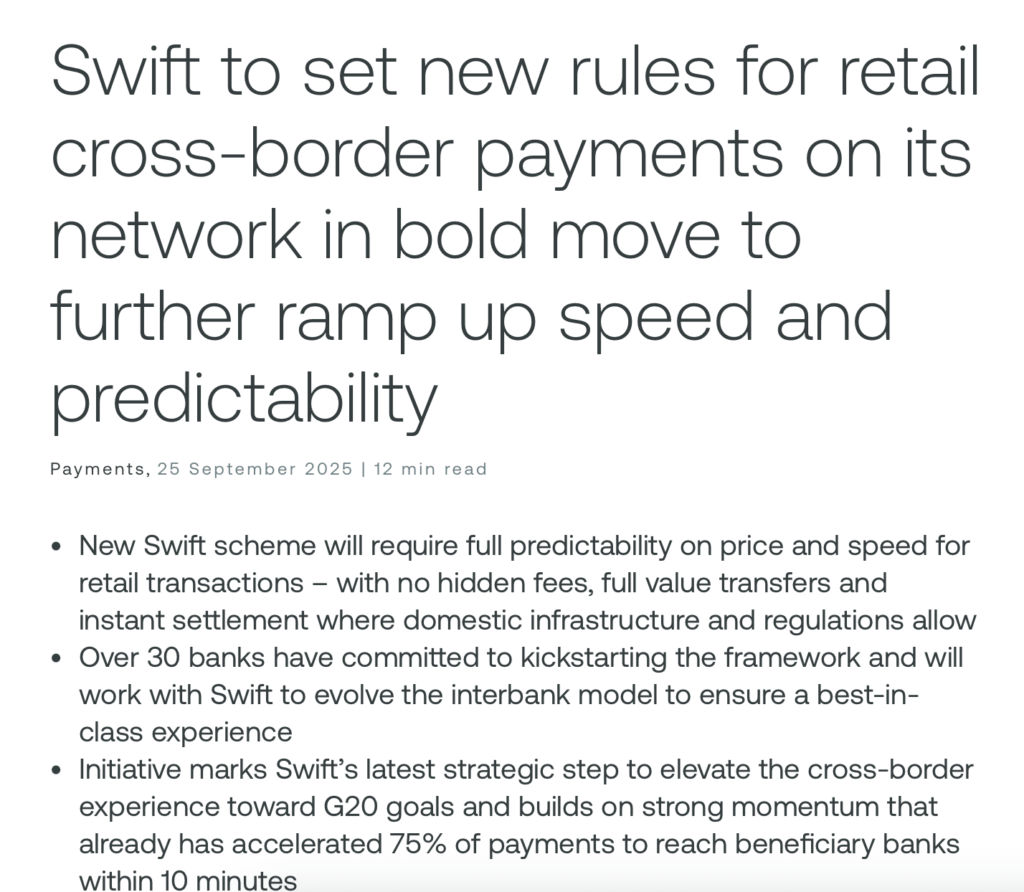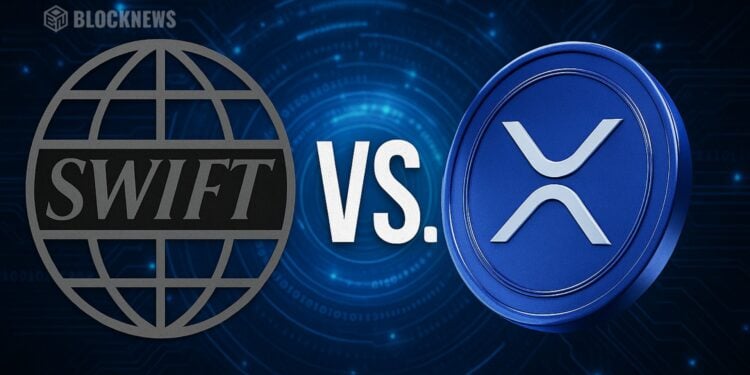- SWIFT is piloting an “open network” for instant, no-fee cross-border payments, exploring Ethereum’s Linea L2.
- Stablecoins forced the shift as their cheap, fast transfers disrupted SWIFT’s old model.
- Ripple’s long-term strategy to rival SWIFT faces challenges if Ethereum becomes part of SWIFT’s own modernization.
SWIFT has been the backbone of global banking for decades, but it’s now facing real pressure from stablecoins and blockchain-based rails. To keep pace, the network is piloting an “open network” designed for instant cross-border payments with no hidden fees. This is a major shift for a system where payments can sometimes take days and cost more than they should, especially for retail remittances.
Reports suggest SWIFT is exploring Ethereum’s Layer 2 Linea, developed by Consensys, as part of this modernization. The goal is faster, transparent on-chain messaging that can handle settlement at scale. According to one insider, the project may take several months to materialize, but the potential impact on international banking is huge.
Why SWIFT Is Exploring Ethereum Linea
SWIFT currently connects over 11,000 partner banks across 200 countries. Its reach is unmatched, but inefficiencies weigh it down. Around 80% of payment delays happen at the “last mile,” where compliance checks and local processes slow things down. Meanwhile, stablecoins allow millions to move across borders instantly for pennies. Payment aggregators are seeing record growth in stablecoin adoption, and legacy players like MoneyGram have already added support. SWIFT had little choice but to respond.
The pilot program includes 17 major banks such as BNY Mellon and Wells Fargo. Thierry Chilosi, SWIFT’s Chief Business Officer, stressed that the aim is to eliminate hidden fees and improve customer experience. By testing blockchain rails, SWIFT is signaling that it’s ready to adapt rather than risk being left behind.
Ethereum DeFi Benefits From SWIFT Adoption
If SWIFT integrates Linea, Ethereum could become an indirect backbone for institutional payments. That kind of validation from a global giant could further boost Ethereum’s standing as infrastructure for traditional finance. With DeFi already driving stablecoin flows, Ethereum’s ecosystem is well-positioned to benefit if SWIFT’s transition succeeds.
This also highlights a bigger shift: banks and institutions are no longer ignoring blockchain. Instead, they’re experimenting with ways to plug into it. For Ethereum, this could mean new inflows of capital and long-term partnerships with the financial system.
Ripple vs SWIFT: Who Wins the Cross-Border Payment Race?
Ripple, on the other hand, might find itself in a tricky spot. For years, Ripple pitched XRP as the blockchain that could disrupt or even replace SWIFT. Ripple CEO Brad Garlinghouse recently claimed XRP could handle 14% of SWIFT’s daily volumes by 2030. On paper, XRP Ledger’s throughput backs this up, with 1,500 TPS compared to SWIFT’s 450.

But SWIFT’s network effects remain its strongest card. With more than 40 million messages daily across 11,000 banks, its reach far exceeds Ripple’s. If SWIFT successfully modernizes using Ethereum rails, Ripple’s role as “the SWIFT killer” may not hold up as strongly. Instead, it may have to reposition itself in the cross-border payments market.
The Future of Cross-Border Payments with Blockchain
The fact that SWIFT is experimenting with Ethereum’s Linea shows how far blockchain has come in mainstream finance. Stablecoins pushed the change, users demanded faster and cheaper transfers, and now traditional networks are adapting. Whether Ethereum or Ripple comes out ahead is still an open question, but one thing is certain: the future of cross-border payments is going to look a lot different than it did just a few years ago.














